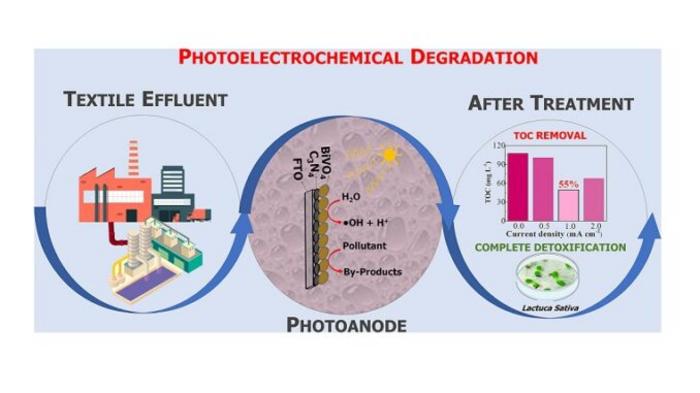Photoelectrochemical processes have been considered sustainable alternatives for the remediation of water contaminated by domestic or industrial effluents. Simply put, the strategy consists of using solar energy to degrade organic pollutants.

Credit: CDMF
Photoelectrochemical processes have been considered sustainable alternatives for the remediation of water contaminated by domestic or industrial effluents. Simply put, the strategy consists of using solar energy to degrade organic pollutants.
In an article published in the journal Chemosphere, researchers in Brazil describe the synthesis of several different semiconductor materials that can be used as photoanodes.
Photoanodes are the medium for photogeneration of electrons to produce an electric current in photoelectrochemical systems. The article also describes the use of one of these materials to remove toxic substances such as dyes from real-world effluent produced by the textile industry.
The researchers are affiliated with the Center for Development of Functional Materials (CDMF) and the Center for Innovation in New Energies (CINE).
CDMF is a Research, Innovation and Dissemination Center (RIDC) established by FAPESP at the Federal University of São Carlos (UFSCar). CINE is an Engineering Research Center (ERC) supported by FAPESP and Shell, with facilities at various institutions.
The study was funded by FAPESP via two projects (20/14741-6 and 17/11986-5).
In the study, the researchers synthesized semiconductors comprising carbon nitride (C3N4) and bismuth vanadate (BiVO4).
Bismuth vanadate, associated with the use of solar energy, removed toxic substances efficiently with low electricity consumption. The results suggest that the material, which is inexpensive and easy to produce, has potential applications in industry, especially to treat wastewater from textile mills. Production of the material can be combined with the generation of hydrogen, which in turn can be used to produce electricity.
About São Paulo Research Foundation (FAPESP)
The São Paulo Research Foundation (FAPESP) is a public institution with the mission of supporting scientific research in all fields of knowledge by awarding scholarships, fellowships and grants to investigators linked with higher education and research institutions in the State of São Paulo, Brazil. FAPESP is aware that the very best research can only be done by working with the best researchers internationally. Therefore, it has established partnerships with funding agencies, higher education, private companies, and research organizations in other countries known for the quality of their research and has been encouraging scientists funded by its grants to further develop their international collaboration. You can learn more about FAPESP at www.fapesp.br/en and visit FAPESP news agency at www.agencia.fapesp.br/en to keep updated with the latest scientific breakthroughs FAPESP helps achieve through its many programs, awards and research centers. You may also subscribe to FAPESP news agency at http://agencia.fapesp.br/subscribe.
Journal
Chemosphere
Article Title
Efficient photoelectrochemical real textile wastewater detoxification using photoanodes of C3N4–BiVO4
Article Publication Date
27-Jan-2024



